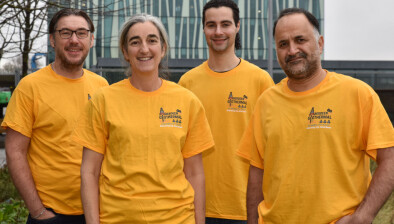And finally… brick pit

A new study has shown that olive pit waste can effectively reduce energy usage in buildings, demonstrating how the circular economy can be applied to the construction sector.
Spanish researchers from the University of La Rioja’s mechanical engineering department have demonstrated that using ground olive pits in mortar brick manufacturing can lead to significant economic savings and reduce the environmental impact of construction and building use.
The research analysed the impacts of doping perforated mortar bricks with ground olive pits in a 5-15% ratio by volume of fine aggregate for building construction.
“The use of olive pit waste in the manufacture of facade bricks is a clear example of how the circular economy can transform an industry’s by-products into innovative and sustainable building materials,” said Javier Ferreiro-Cabello, engineering researcher at the University of La Rioja.
Doping is a technique in which a small quantity of a substance is added to a material to alter its properties. The method is employed in the manufacture of construction materials to increase their energy efficiency, strength, durability, fire resistance or corrosion resistance.
In recent years, more research has focused on doping to reduce thermal conductivity, which could lower the energy required to heat or cool buildings.
Buildings are Europe’s single largest energy consumer. Approximately 40% of the total energy consumed in the European Union is used in buildings, and around 80 percent of the energy used in EU homes is for heating, cooling and hot water.
Around 85% of EU buildings were built before 2000, and 75% have poor energy performance. The construction sector is, therefore, seen as crucial to achieving the EU‘s energy and climate goals.
The study focused mainly on Andalusia, Spain, where large quantities of olive pits are produced as a by-product of olive oil production.
“My initial interest arose from observing the enormous volume of waste generated by the olive oil industry, specifically olive pits,” said lead author Javier Ferreiro-Cabello.
“These residues have significant but underutilized potential in terms of reuse and added value,” he added. “In studying possible applications for these pits, I identified the possibility of using them to manufacture bricks for mortar facades. This idea led me to further investigate the feasibility and environmental impact of this proposal.”
The team’s analysis showed savings and economic returns from the medium-term (10 to 20 years) onward by reducing conventional energy consumption in heating and air conditioning installations.















